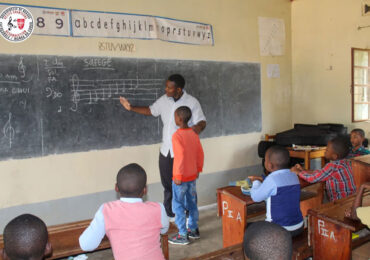Readers will know that members of most religious orders typically take the three vows of poverty, chastity and obedience. Some of these religious communities embrace additional vows, i.e. for the Trappists that of silence, for the Jesuits that of loyalty to the Pope. For the Benedictines the fourth vow is stability of place, or—stated more simply—staying put.Forty years ago the Benedictine Monks of Newark Abbey who had been committed to the City of Newark, New Jersey, since 1857 found themselves faced with a situation that challenged their fidelity to this fourth vow. Their faithful response to that challenge has been the agency for the not-so-small “miracle on High Street.”
Since 1868 the monks of Newark Abbey have been providing college prep education for young men at the St. Benedict’s Preparatory School located on High Street (now Martin Luther King, Jr. Boulevard). For a century this monastic community provided this superb education and the charism of their 1,500 year tradition to the sons of German, Irish and Italian families residing in or near Newark. But, by 1972 due to the deteriorating social and economic conditions of that city and the “white-flight” that ensued wealthy and middle-class suburban families had become reluctant to send their sons into Newark’s Central Ward for their schooling. The school closed.
But, the monks stayed. After prayerful discernment (and only one academic year) they resolved to apply their ministry to a radically different student body, one that reflected the new racial, ethnic, cultural and religious mixture that had arisen in Newark and its environs. Since the reopening of its doors in 1973 the vast majority of St. Benedict’s students have been minority boys of African-American or Latino heritage. Forty percent of the students are Catholic. There are also students who are Jews, Buddhists, Moslems and Hindus. The overwhelming common denominator is poverty. As Father Edwin Leahy, the Headmaster (and courageous leader in reopening the school) points out: “We are giving a Cadillac education to kids who can’t afford a bicycle.” The education they receive from St. Benedict’s provides them with an escape from the cycle of poverty. But, it gives them much more by teaching them leadership, self-respect and fraternal cooperation.
Seventy of the 550 students (grades 7 through 12) actually board at St. Benedict’s, in many cases because their home environment is either lacking or so deleterious that living away from the school would seriously hamper their educational and personal development. The cost of educating a single student is around $17,700. Tuition ranges from $5,100 to $7,500. Needless to point out, every student receives a generous subsidy thanks to the donated services of the Benedictine Monks and the monetary support of alumni and other philanthropic sources.
Clearly, the subsidies are well spent. Ninety-five percent of the graduates attend college and these colleges include top notch schools like Pomona, Notre Dame, Harvard, Georgetown, Columbia, Cornell, etc.
The young men who have been formed by the Benedictine community at St. Benedict’s since 1973 can move forward in the world because the monks at St. Benedict’s honored their vow to stay put. There is irony here. Both advance the Kingdom.

